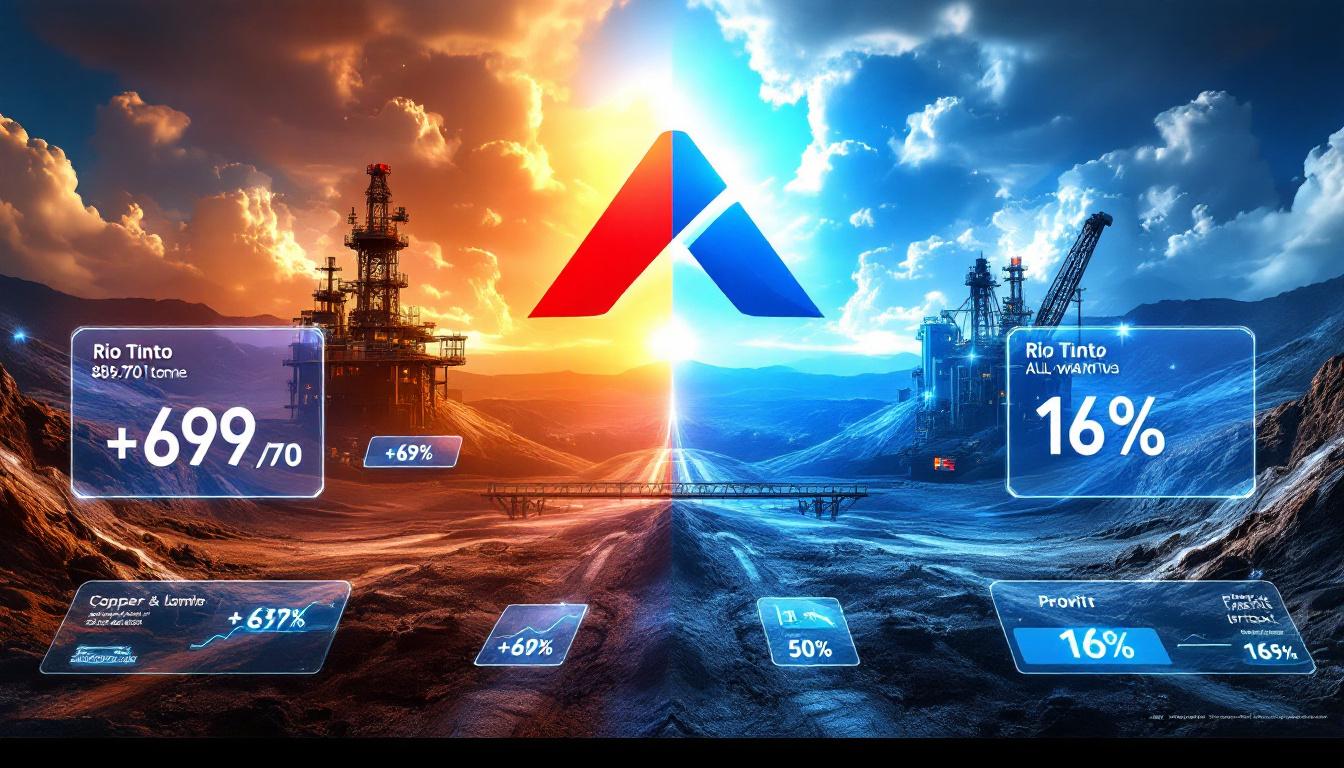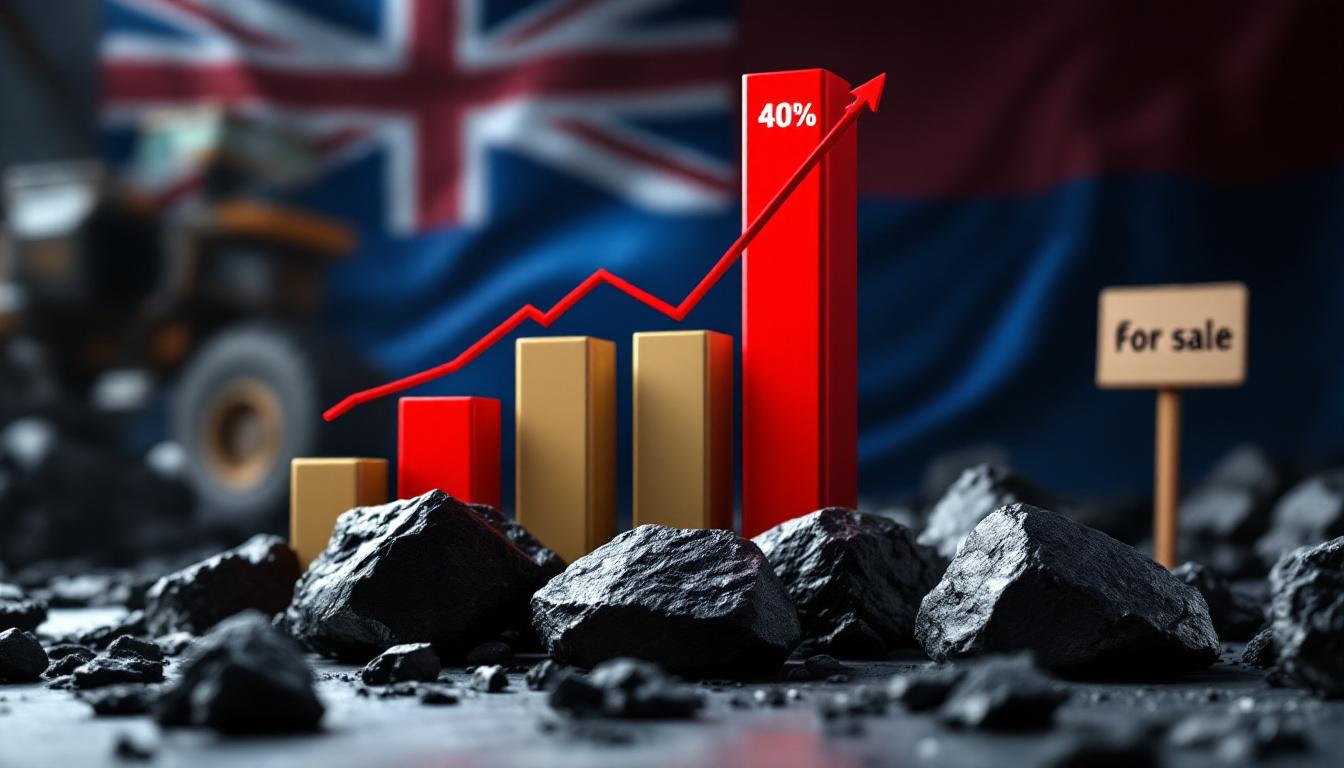What Makes New Zealand a Strategic Location for Gold and Antimony Mining?
New Zealand's unique geological landscape offers exceptional opportunities for mineral exploration, particularly for gold and antimony deposits. The country's diverse geological formations, shaped by its position along the Pacific Ring of Fire, have created ideal conditions for high-grade mineralization that remains largely underexplored by modern standards.
The Reefton district stands out as a premier gold exploration region with a rich mining history dating back to 1869. This area has produced over 2 million ounces of gold historically, primarily from high-grade quartz veins that continue to show exceptional exploration potential using modern techniques.
The Unique Geological Setting of New Zealand
New Zealand sits at the boundary of the Australian and Pacific tectonic plates, creating a dynamic geological environment that has fostered the development of diverse mineral deposits. The country's geological history features significant volcanic activity, metamorphism, and structural deformation – all processes that facilitate the concentration of valuable minerals.
The North Island is characterized by active volcanism and geothermal systems, while the South Island features the prominent Alpine Fault system that has helped create the conditions for gold and antimony mineralization. These geological processes have concentrated minerals within accessible formations, particularly in the Reefton district where gold has been mined since the 19th century.
According to geological experts, New Zealand's unique tectonic setting creates mineral systems similar to those found in parts of North America and Australia, but with the advantage of being relatively underexplored with modern technologies.
Strategic Importance of New Zealand's Mining Sector
New Zealand offers significant competitive advantages for mineral development compared to many global mining jurisdictions. The country boasts extensive infrastructure networks that substantially reduce development costs for new mining operations.
"You've got power, water, rail, but also concentrators, several smelters all within 100 kilometers," notes an industry expert familiar with the region. This infrastructure density is particularly notable in areas like the Rudai volcanogenic massive sulfide belt, where proximity to processing facilities creates significant economic advantages.
The labor force represents another strategic advantage, with "tens of thousands of highly qualified" mining professionals available in a region that has seen continuous mining activity since 1749. This deep expertise translates to operational efficiencies and reduced training costs.
When comparing New Zealand to other gold and antimony producing regions globally, industry analysts highlight three key advantages:
- Lower economic thresholds for development due to existing infrastructure
- Stable regulatory environment with recent moves to streamline mining permitting guide
- Strategic positioning near Asian markets for antimony, which faces severe supply constraints
These factors combine to make New Zealand an increasingly attractive destination for companies seeking to develop gold and antimony resources in a stable jurisdiction with established mining infrastructure.
Why is Antimony Considered the Scarcest Critical Mineral?
Antimony holds a unique position among critical minerals, with experts describing it as "the most scarce critical mineral" in today's market. This scarcity isn't simply about geological rarity but stems from a combination of concentrated production, supply chain vulnerabilities, and growing strategic importance.
The metal's criticality is reflected in its inclusion on virtually every nation's critical minerals list, from the United States and European Union to Australia and Japan. This universal recognition underscores antimony's essential role in modern economies and the significant supply risks associated with its production.
Understanding Antimony's Critical Status
Antimony (Sb) is a silvery-white metalloid with unique properties that make it virtually irreplaceable in several critical applications. It serves as a crucial flame retardant in everything from electronics to aircraft and military equipment. It's also essential in the production of lead-acid batteries, certain semiconductors, and specialized alloys used in defense applications.
What makes antimony particularly vulnerable from a supply perspective is the extreme concentration of production. China has historically dominated global antimony supply, controlling approximately 60% of world production. This concentration creates inherent supply vulnerabilities, especially as geopolitical tensions rise.
The vulnerability has become increasingly apparent as "China has done what China does best and cut exports of antimony," according to industry observers. This export restriction has created immediate supply pressures for Western economies that rely on antimony for critical defense and industrial applications.
Antimony's Critical Applications:
- Flame retardants for plastics, textiles, and electronics
- Lead-acid batteries for vehicles and backup power systems
- Infrared sensors and specialized semiconductor materials
- Ammunition and other defense applications
- Lead alloys for increased hardness and durability
The combination of these essential applications and concentrated supply has led to antimony being designated as one of the most critical minerals globally, with supply security concerns increasing annually.
Antimony Market Dynamics and Valuation
The antimony market has experienced significant price appreciation in response to supply constraints, with current prices reaching approximately $60,000 per ton. This valuation reflects both the metal's inherent scarcity and the market's recognition of increasing supply challenges.
For mining companies with antimony resources, this price level creates compelling economic opportunities. One New Zealand project claims to have "already proven up an 8,000-ton resource" of antimony, representing significant value at current market prices.
The market dynamics are further complicated by strategic stockpiling initiatives from governments concerned about supply security. The U.S. Defense Logistics Agency has been actively acquiring antimony for its National Defense Stockpile, competing with private sector buyers for limited supplies.
Industry analysts predict continued price strength for antimony based on several factors:
- Supply restrictions from China limiting global availability
- Limited substitutability in critical applications
- Growing demand from flame retardant and battery sectors
- Few near-term production sources outside China
This combination of factors has created what some describe as a "perfect storm" for antimony prices, with potential for further appreciation as supply constraints persist against steady or growing demand. The recent approval of a strategic antimony loan for resource development further underscores the metal's critical importance.
What Are the Key Gold-Antimony Projects in New Zealand?
New Zealand hosts several promising gold-antimony projects that have attracted significant attention from both domestic and international mining interests. These projects benefit from the country's favorable geology, established mining history, and improving regulatory environment.
The most advanced projects leverage modern exploration techniques to define resources that previous generations of miners couldn't fully delineate. This technological advantage, combined with rising metal prices, has transformed prospects that were once considered marginal into potentially economic deposits.
The Cumberland High-Grade Gold Project
The Cumberland project in the historic Reefton district represents one of New Zealand's most promising high-grade gold opportunities. Located within a gold field that has produced over 2 million ounces historically, Cumberland benefits from extensive historical workings that provide valuable geological data.
The project's development strategy centers on a "short-decline access approach" that minimizes initial capital requirements while allowing rapid access to high-grade zones. This pragmatic development plan recognizes the advantages of starting with a focused operation that can generate early cash flow to fund further expansion.
Cumberland's location provides significant infrastructure advantages, including:
- Proximity to established roads and power infrastructure
- Access to experienced mining workforce
- Reasonable distance to processing facilities
- Well-understood permitting requirements
Exploration results have demonstrated the continuation of the high-grade mineralization that made the Reefton district famous during its historical production era. Modern drilling exploration insights have allowed for more precise resource definition than was possible during earlier mining periods.
The Old Creek Gold-Antimony Deposit
The Old Creek deposit represents a particularly interesting opportunity due to its dual-metal mineralization containing both gold and antimony. This combination creates potential for robust project economics, especially given antimony's current price of approximately $60,000 per ton.
Recent exploration work at Old Creek has delivered encouraging results, with drilling "hitting these big gold-antimony type veins" that demonstrate both lateral and vertical continuity. The exploration team has successfully "extended 100m down depth, 100m north" from the initial discovery area, suggesting significant resource expansion potential.
The project team has set an ambitious target to "get to a resource by the end of the year north of 350 to 500,000 ounces of gold equivalent." This size would place Old Creek among the more significant gold-antimony resources globally, with particular strategic importance given antimony's critical mineral status.
A key technical advantage at Old Creek is the apparent continuity of mineralization, with explorers noting that "if we prove continuity, we're onto a mine start." This geological characteristic significantly reduces development risk and improves the probability of successful resource conversion to reserves.
Exploration Techniques Driving New Zealand Discoveries
Modern exploration in New Zealand benefits from technological advances that allow for more precise targeting and resource definition than was possible during previous mining eras. These techniques are particularly valuable in areas with challenging terrain or complex geology.
Passive seismic technology has emerged as a particularly useful tool, described as "very inexpensive but you get a lot of good data." This approach allows explorers to identify structural controls on mineralization without the cost and environmental impact of more invasive exploration methods.
Other advanced exploration approaches being employed in New Zealand include:
- Integrated geophysical surveys combining magnetic, electromagnetic, and gravitational data
- Oriented core drilling to precisely map structural controls on mineralization
- Advanced geochemical techniques for detection of pathfinder elements
- 3D geological modeling to visualize complex mineral systems
These methods are complemented by collaboration with major mining companies, as evidenced by participation in the "BHP Explore Program (2024)" for copper/gold targeting. These partnerships bring additional technical expertise and funding to accelerate resource definition.
The combination of historical mining data with modern exploration techniques creates a powerful advantage for companies exploring in New Zealand's established mining districts. This synthesis of old and new knowledge has been key to recent exploration successes.
How Does Gold-Antimony Mining Compare to Other Critical Mineral Projects?
The development of gold-antimony projects follows a different trajectory than many other critical mineral ventures. Understanding these differences is essential for investors, policymakers, and industry participants looking to evaluate opportunities across the minerals sector.
Gold-antimony projects benefit from gold's established market and pricing transparency, while also capturing the strategic value of antimony as a critical mineral. This combination creates unique economic and strategic advantages compared to projects focused on a single commodity.
Comparing Development Timelines Across Mineral Types
Development timelines vary significantly across different resource types, with implications for investment returns and strategic planning:
| Resource Type | Typical Timeline to Production | Key Factors Affecting Timeline |
|---|---|---|
| Gold-Antimony | 5-8 years | Permitting, resource definition, processing complexity |
| Tungsten | 18-24 months (focused projects) | Metallurgical testing, market development |
| Natural Gas | Approximately 2 years | Simpler feasibility, established infrastructure |
| Silver | 3-5 years | Often developed as byproduct, reducing timeline |
The 5-8 year timeline for gold-antimony projects reflects the comprehensive work required for resource definition, feasibility studies, environmental permitting, and construction. This extended timeline necessitates patient capital and supportive long-term investors.
By contrast, gas extraction projects can move "from discovery to production in two years," according to industry experts. This accelerated timeline reflects the simpler feasibility process and more standardized development approach for gas resources.
Tungsten projects demonstrate an intermediate timeline, with one Idaho project targeting "production online in the next 18 months." This accelerated schedule reflects both the project's advanced stage and the strategic importance of tungsten to the U.S. administration, which has prioritized domestic production of this critical mineral.
Economic Threshold Variations by Mineral Type
The economic viability threshold varies substantially across different mineral projects, influenced by:
-
Infrastructure requirements: Gold-antimony projects in regions with existing infrastructure like New Zealand have "significantly lower" economic thresholds due to reduced capital requirements.
-
Processing complexity: Minerals requiring sophisticated metallurgical processing generally need larger resources to justify the capital investment in processing facilities.
-
Byproduct economics: Projects producing multiple commodities often benefit from byproduct credits that enhance overall economics. Gold-antimony deposits exemplify this advantage.
-
Product premium potential: Some projects can target premium market segments, as seen with Direct Reduction Ready Iron (DRRI) that commands higher prices than standard iron ore due to its lower carbon footprint in steel production.
For gold-antimony projects specifically, the economics benefit from both gold's established value and the strategic premium attached to antimony. With antimony prices at approximately $60,000 per ton, even modest antimony content can significantly enhance project economics.
Tungsten projects face different economic considerations, with the metal's exceptional properties (melting point of 2,500°C and hardness second only to diamond) creating stable demand from specialized industries. The strategic importance of tungsten to defense applications provides additional market security.
Silver projects often benefit from byproduct economics, with many silver mines producing the metal alongside lead, zinc, or copper. This multi-metal approach reduces overall production costs and improves project resilience across price cycles.
What Are the Investment Considerations for Gold-Antimony Projects?
Investing in gold-antimony projects requires understanding both traditional precious metals investment criteria and the unique dynamics of critical minerals markets. This dual perspective allows investors to properly evaluate the distinctive risk-reward profile these projects offer.
Gold-antimony projects combine the relative stability and liquidity of gold markets with the strategic growth potential of antimony as a critical mineral. This combination can create compelling investment cases when properly structured and developed.
Project Financing Options in the Current Market
The financing landscape for gold-antimony projects has evolved significantly in recent years, with several options available despite the general tightening of traditional mining finance:
Royalty structures have emerged as particularly valuable financing tools in the current market environment. These arrangements provide "bespoke solutions" that can be tailored to project-specific needs while offering investors defined returns without the complexity of equity ownership.
A key advantage of royalty financing is the ability to incorporate "step-up clauses" that protect investors against delays. As one industry expert explains, these structures might include provisions where "if you don't go into production by X date, [the royalty] steps up by 0.5% or 1%." This aligns incentives between developers and financiers.
The royalty approach is particularly well-suited to the current high interest rate environment, where traditional debt financing has become more expensive and difficult to secure. Royalty companies can offer competitive capital costs while providing more flexible terms than conventional lenders.
Other financing approaches gaining traction include:
- Strategic investor partnerships with end-users seeking antimony supply security
- Hybrid structures combining upfront capital with production-linked payments
- Joint venture arrangements with larger mining companies seeking critical minerals exposure
- Government-backed financing for projects producing strategic minerals
These creative financing approaches reflect the mining industry's adaptation to changing capital markets and the strategic importance of critical minerals like antimony.
Key Criteria for Project Evaluation
When evaluating gold-antimony projects, sophisticated investors focus on several key criteria that differentiate high-potential opportunities from marginal projects:
Acquisition value represents a fundamental starting point, with industry experts suggesting "sub $4 an ounce in the ground" as a target threshold for gold resources. This metric provides a baseline for assessing whether a project has been acquired at a price that allows for meaningful investor returns.
Resource growth potential emerges as another critical factor, with investors seeking projects where "the resource can't be entirely drilled off" during initial exploration. This upside potential creates optionality that can significantly enhance returns as development proceeds and additional resources are defined.
Holding costs require careful consideration, particularly for projects with extended development timelines. Investors should avoid "large brownfield assets with reclamation bonds" that create significant carrying costs during the development phase. Lower-cost exploration properties allow more patient capital deployment.
Jurisdictional advantages play an increasingly important role in project evaluation. New Zealand offers several distinct advantages in this regard:
- Stable political environment with rule of law
- Improving regulatory framework for mining
- Well-developed infrastructure reducing capital requirements
- Skilled mining workforce
- Proximity to Asian markets for antimony
When these criteria align in a single project, the investment case becomes particularly compelling, especially for gold-antimony projects that benefit from both precious metal stability and critical mineral growth potential. Recent gold price analysis has further strengthened the economic case for these projects, with gold market performance consistently exceeding expectations.
How Are Regulatory Changes Affecting Mining in New Zealand?
New Zealand's regulatory environment for mining has entered a period of significant evolution, with important implications for both domestic and international investors in the minerals sector. These changes reflect broader shifts in the country's approach to resource development and foreign investment.
Understanding the regulatory direction provides essential context for evaluating the attractiveness of New Zealand's gold and antimony exploration in New Zealand relative to opportunities in other jurisdictions.
Recent Policy Developments
New Zealand is undertaking substantial reforms to its foreign direct investment regime, with a senior parliamentarian noting that "we are about to change our regime for foreign direct investment." This initiative aims to "unclog the processes and the system" that have previously created friction for international investors in the resources sector.
The reforms appear to represent a meaningful shift in New Zealand's approach to resource development, with political leadership emerging that describes itself as "the most pro-development, pro-industry politician in our parliament." This positioning suggests a more supportive approach to responsible mining development than has been evident in recent years.
The policy changes include specific measures to:
- Streamline permitting processes for exploration and development
- Rationalize environmental review procedures
- Create more predictable
Seeking the Next Major Gold-Antimony Discovery?
Discover real-time alerts on significant ASX mineral discoveries with Discovery Alert's proprietary Discovery IQ model, which transforms complex geological data into actionable investment insights. Explore why major mineral discoveries can lead to substantial market returns by visiting Discovery Alert's dedicated discoveries page and gain a market-leading edge with our 30-day free trial.




